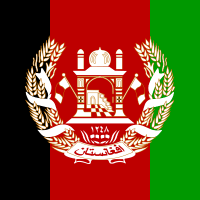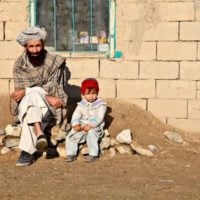Securing funding and grants is a critical component for the sustainability and growth of arts and culture-based NGOs. These organizations often rely on a diverse array of funding sources, including government grants, private foundations, corporate sponsorships, and crowdfunding campaigns. To effectively navigate this landscape, NGOs must develop a comprehensive funding strategy that aligns with their mission and goals.
Researching potential grant opportunities is essential; platforms like GrantWatch and the Foundation Center can provide valuable insights into available funding sources tailored to arts and culture initiatives. Moreover, crafting compelling grant proposals is an art in itself. NGOs should focus on clearly articulating their mission, the impact of their programs, and how the requested funds will be utilized.
Including measurable outcomes and demonstrating past successes can significantly enhance the chances of securing funding. Collaborating with experienced grant writers or attending workshops can also improve proposal quality. Additionally, building relationships with funders through networking events or informational meetings can create opportunities for future support.
Collaboration and Partnerships with Other NGOs and Organizations
Pooling Resources and Expertise
Collaboration is a powerful tool for arts and culture-based NGOs, enabling them to pool resources, share expertise, and amplify their impact. By forming partnerships with other NGOs, organizations can leverage each other’s strengths to create more comprehensive programs that address community needs.
Extending Partnerships Beyond the Nonprofit Sector
Furthermore, partnerships can extend beyond the nonprofit sector. Collaborating with businesses, local governments, and cultural institutions can open new avenues for funding and resources. For example, an NGO focused on community theater might partner with a local business to sponsor performances or workshops, providing mutual benefits through increased visibility and community engagement.
Key to Successful Partnerships
Establishing these partnerships requires clear communication and shared goals, ensuring that all parties are aligned in their mission to foster arts and culture within the community.
Access to Underprivileged Communities and Marginalized Groups
One of the primary missions of many arts and culture-based NGOs is to ensure access to creative opportunities for underprivileged communities and marginalized groups. This involves not only providing access to arts education but also creating inclusive spaces where diverse voices can be heard and celebrated. NGOs can implement outreach programs that specifically target these communities, offering free or low-cost workshops, performances, and exhibitions that encourage participation from individuals who may not otherwise have access to such experiences.
Additionally, it is crucial for NGOs to engage with these communities in meaningful ways. This could involve co-creating programs with community members to ensure that their needs and perspectives are reflected in the offerings. For instance, an NGO might work with local artists from marginalized backgrounds to develop a series of workshops that explore cultural heritage through art.
By prioritizing inclusivity and representation, NGOs can foster a sense of belonging and empowerment among participants, ultimately enriching the cultural landscape of the community.
Advocacy and Policy Influence in the Arts and Culture Sector
Advocacy plays a vital role in shaping policies that support the arts and culture sector. Arts and culture-based NGOs have a unique opportunity to influence public policy by raising awareness about the importance of funding for the arts, promoting equitable access to cultural resources, and advocating for the rights of artists. Engaging in advocacy efforts can take many forms, from organizing campaigns that highlight the impact of arts education on youth development to lobbying for increased government support for cultural initiatives.
To effectively advocate for change, NGOs should build coalitions with other organizations that share similar goals. By uniting voices, they can create a stronger impact on policymakers. Additionally, utilizing data and research to support advocacy efforts can help demonstrate the tangible benefits of investing in the arts.
For example, presenting statistics on how arts programs reduce crime rates or improve academic performance can be persuasive in garnering support from decision-makers. Ultimately, sustained advocacy efforts can lead to more favorable policies that benefit the entire arts community.
Education and Outreach Programs for Youth and Adults
Education is at the heart of many arts and culture-based NGOs’ missions. Developing robust education and outreach programs for both youth and adults can foster creativity, critical thinking, and cultural appreciation within communities. These programs can take various forms, including workshops, classes, mentorship opportunities, and community events that encourage participation from individuals of all ages.
For youth programs, NGOs might focus on integrating arts education into school curricula or providing after-school enrichment activities that allow students to explore different artistic disciplines. For instance, an NGO could offer a summer camp where children learn about visual arts, music, dance, or theater through hands-on experiences led by professional artists. Similarly, adult education programs can provide opportunities for lifelong learning through classes in various art forms or workshops that explore cultural heritage.
By prioritizing education and outreach, NGOs can cultivate a vibrant community of artists and art enthusiasts who contribute to the cultural fabric of society.
Innovation and Technology Integration in Arts and Culture Programming
In today’s digital age, integrating innovation and technology into arts and culture programming is essential for reaching wider audiences and enhancing engagement. Arts organizations can leverage technology in numerous ways, from utilizing social media platforms to promote events to incorporating virtual reality experiences into exhibitions. For example, an NGO might create an interactive online gallery that allows users to explore artworks from their homes or host virtual performances that reach audiences beyond geographical limitations.
Moreover, technology can facilitate collaboration among artists and organizations across different regions. Online platforms enable artists to connect with one another, share resources, and collaborate on projects regardless of physical distance. This not only fosters creativity but also encourages diverse perspectives within artistic endeavors.
Additionally, incorporating data analytics can help NGOs better understand audience preferences and tailor programming accordingly. By embracing innovation and technology, arts and culture-based NGOs can remain relevant in an ever-evolving landscape while expanding their reach and impact within communities. In conclusion, arts and culture-based NGOs play a crucial role in enriching communities through funding initiatives, collaborative partnerships, inclusive access programs, advocacy efforts, educational outreach, and innovative technology integration.
By focusing on these key areas, organizations can enhance their effectiveness in promoting arts and culture while ensuring that diverse voices are represented within the creative landscape. As they navigate challenges and seize opportunities in this dynamic sector, these NGOs will continue to inspire creativity and foster cultural appreciation for generations to come.








































